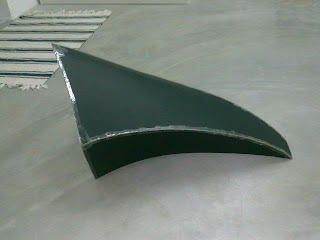By Vy
Thursday, October 18, 2012
One Week Chain Replacement
By Vy
Thursday, October 4, 2012
Happenings and shit
By Vy
Wednesday, July 11, 2012
Custom Indicator Lights
 |
| Here is the view of the indicator light... subtle and doesn't stick out like a sore thumb. Just the way i like it. |
 |
| Close up of the light i made for the front. |
By Vy
Tuesday, June 26, 2012
In Frame Cabling
By Vy
Tuesday, May 29, 2012
For Virago Users
http://viragotech.com/
btw, i'm looking for tips and advice on virago 535 modifications for engines i.e. rebores and things like that, if anyone has any tips, please leave a comment.
By Vy
Friday, May 25, 2012
Ways to stretch:
By Vy
Wednesday, April 25, 2012
Kite Tank
By Vy
Tuesday, April 24, 2012
Tanks for everything
Monday, March 12, 2012
Bzzzttt bzzttt
BUT, by no means does this mean that BDC will no longer be making bikes. In reality, far from it.
I have barely been riding the Bad Wolf and already im getting all sorts of ideas.. before I can even begin chopping the Bad Wolf again, we are in the process of planning and saving up for a new yet to be named bike. This time, it will be bigger and badder then ever. And in more ways then one.
The capacity will be much larger and the frame too. However, the design will be a true chopper. No fancy stuff like flamer kits and undercarriage lights. It will only have all the essentials the bike will need like headlamps, tail lamps, horn and indicator.
Anyway, lately I had taken a part time job at a friends place to learn basic welding techniques and wiring as well. Although he is using a MIG, still I am sure i can learn a thing or two.
Last weekend, the LadyBoss had agreed to get an ARC welder so I can do my own welding. before this, we were looking around and wondering what welder to buy and if I should even bother getting one.
We ended up deciding on an ARC welder because then I wouldn't have to buy the inert gas (which isnt easy to find). We were down to 2 types of ARC welders, the AC and Inverter types.
Here is what I found out:
Inverter Type (DC)
Pros:
- easy to move around if you have to move all over the place
- very light
Cons:
- very expensive
- heats up very quickly
- not good for long term welding (like for big projects)
AC Arc Welder (oil cooled)
Pros:
- oil cooled for long usage
- able to use AC and DC rods
- quite cheap
Cons:
- Heavy as hell and not easy to move around
- Your're screwed if it leaks.
After talking to Eelman, Joe and afew other friends, I had decided to go for the AC ARC welder. just bought it but I haven't had the time to test it out yet. I was too busy making a skateboard for it so I can move it around. Plus, I bought a longer cable so I can get to tight spots easier.

By Vy
Tuesday, February 14, 2012
Frame
Doing my research, I found abit about it.
I am stealing this information from Chopperweb. so please click on it to see more info and to support them
Figure 1 illustrates the primary chassis components of a typical V-Twin rigid frame that consists of the following primary elements:
1. Steering head. Also called the stem head, steering neck or headstock.
2. Frame Backbone. Sometimes called the Top-tube.
3. Seat post.
4. Backbone or Top Tube brace.
5. Wishbones. One left and one right. Also called the upper rear wishbones.
6. Wishbone cross member. Also called the upper fender mount.
7. Side tubes. Sometimes called the side rails, bottom rails or lower tubes.
8. Seat post cross member.
9. Rear transmission mount/cross member.
10. Axle plates or side plates.
11. Front tubes or Down tubes which extend into the bottom rails.
12. Front transmission mount.
13. Rear motor mount.
14. Front motor mount.
15. Motor top mount.
By Vy








































